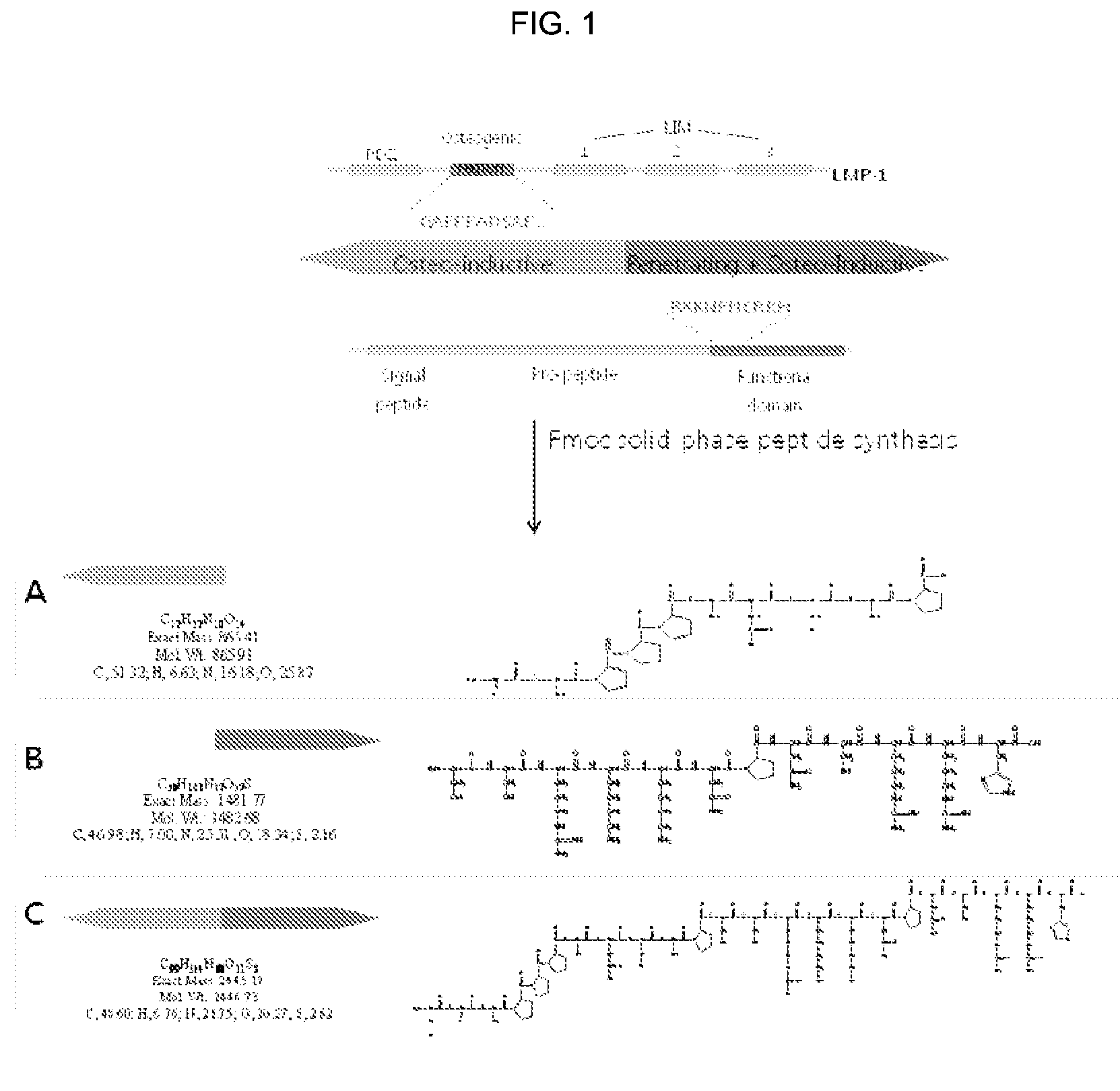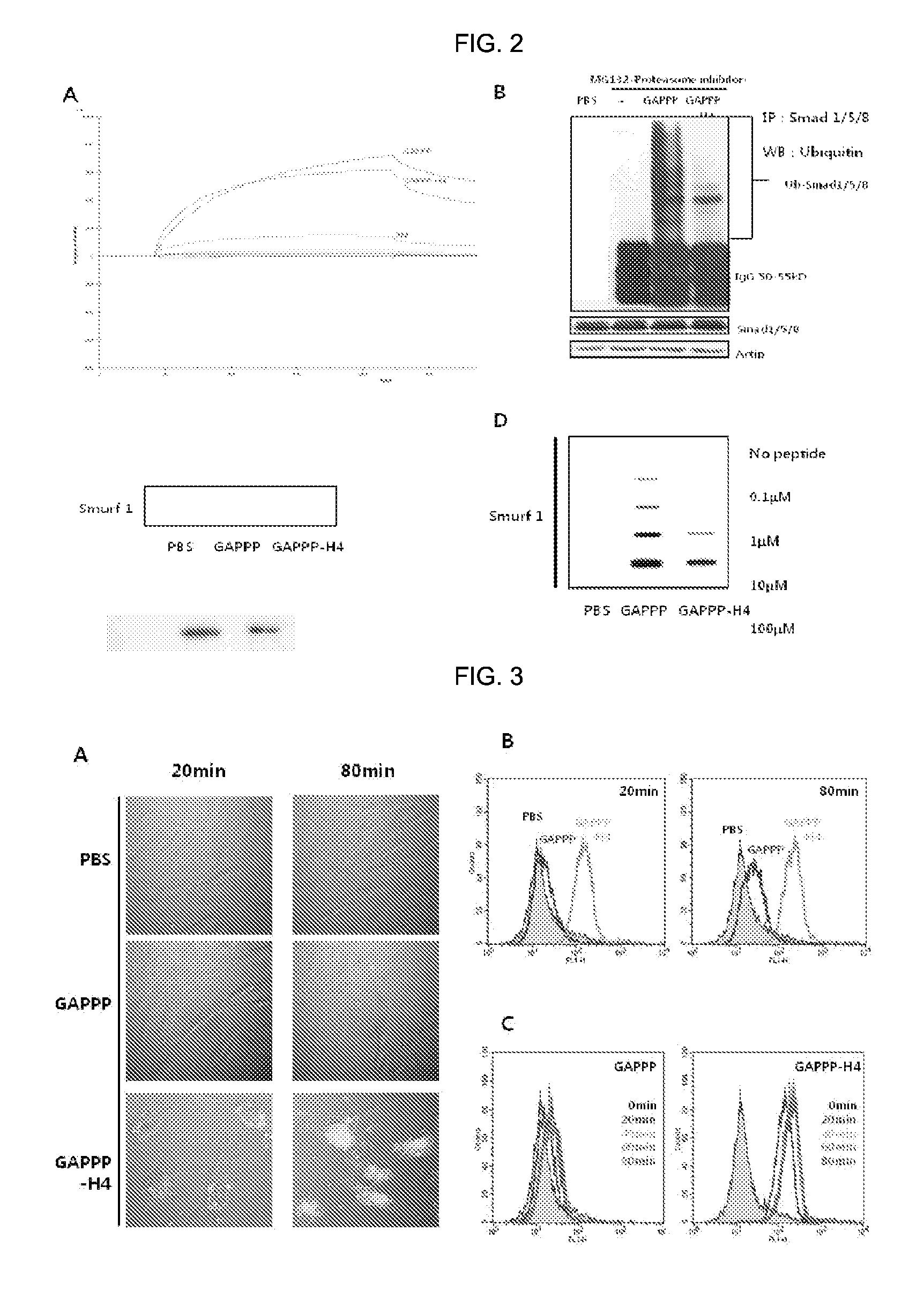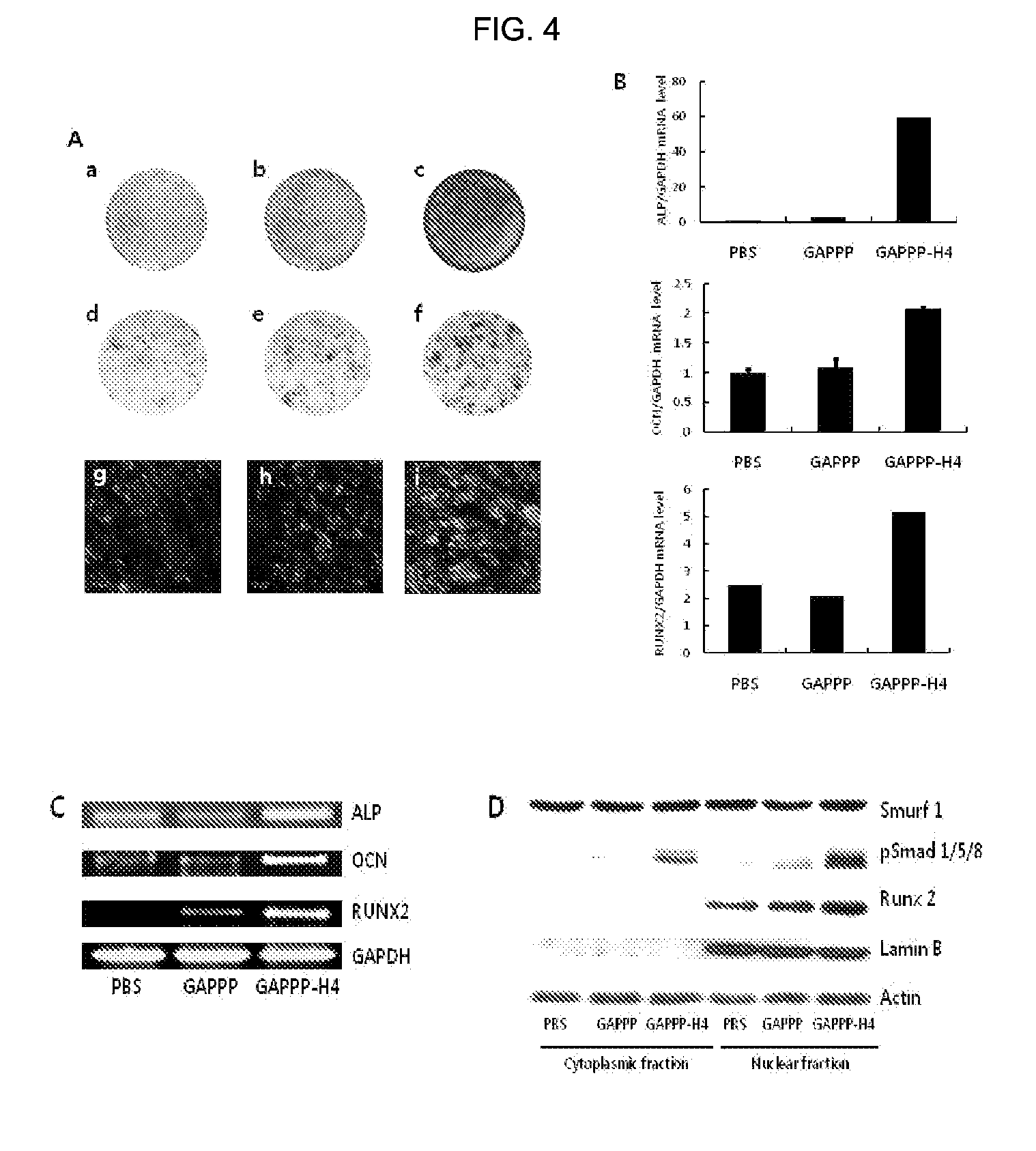Human-derived cell-permeable peptide bioactive peptide conjugate, and use thereof
a bioactive peptide and human-derived cell technology, applied in the field of new human-derived cell-permeable peptidebioactive peptide conjugate, can solve the problems of insufficient number of cells or activity thereof, difficult to find alternatives, and fundamental difficulty in accessing osteoblast cells
- Summary
- Abstract
- Description
- Claims
- Application Information
AI Technical Summary
Benefits of technology
Problems solved by technology
Method used
Image
Examples
example 1
[0056]A peptide was synthesized by the F-moc solid phase chemical synthesis method using a peptide synthesizer, so as to contain GAPPPADSAP (SEQ ID NO: 7) as a bone differentiation inducing sequence derived from LMP1, and H4S(SSRKKNPNCRRH, SEQ ID NO: 1) as a PTD, sequentially from the N-terminus thereof (See FIG. 1). That is, the Rink resin (0.075 mmol / g, 100˜200 mesh, 1% DVB crosslinking) to which Fmoc-(9-Fluorenylmethoxycarbonyl) binds was used as a blocking group. 50 mg of the Rink resin was introduced into the synthesizer, and then subjected to swelling using DMF. Then, a 20% piperidine / DMF solution was used to remove the Fmoc-group. A 0.5M amino acid solution (solvent: DMF), a 1.0M DIPEA solution (solvent: DMF&NMP), and a 0.5M HBTU solution (solvent: DMF) were sequentially introduced in 5, 10, and 5 equivalents, respectively, from the C-terminal of the peptide, followed by reaction for 1-2 hours under the nitrogen atmosphere. Whenever the deprotection and coupling were ended, w...
example 2
Confirmation of Affinity Between Cell Permeable Peptide-Bone Differentiation Inducing Sequence Conjugate and Smurf1
[0061]2-1: Confirmation of Affinity Between Cell Permeable Peptide-Bone Differentiation Inducing Sequence Conjugate and Smurf1 Using Surface Plasmon Resonance Detection Assay Method
[0062]In order to confirm the affinity between cell permeable peptide-bone differentiation inducing sequence conjugate and Smurf1 by a chemical method, a human-derived Smurf1 protein acting as a ligand in the present experiment was purchased from Origene Technoloies (Rockville, Md., USA). The protein (100 mg / ml) was coupled to a gold coated surface of a CM5 chip (BIACORE AB, Sweden) on which amino groups are bounded using an EDC / NHS kit (BIACORE AB, Sweden). (Instead of this experimental method, ‘Immobilization’ integrated into the BIACORE T100 (BIACORE AB, Sweden) software used by the present inventors may be used). In this case, in order to find a suitable pH condition at which the protein ...
example 3
Measurement of Cell Permeability of Cell Permeable Peptide-Bone Differentiation Inducing Sequence Conjugate In Vitro
[0074]3-1: Synthesis of Fluorescence Labeled Cell Permeable Peptide-Bone Differentiation Inducing Sequence Conjugate
[0075]The domains synthesized in Example 1 and Comparative Examples 1 and 2 were labeled with a fluorescent material in order to measure cell permeability. 10 equivalents of fluorescein isothiocyanate (FITC) was bound to N-terminals of the synthesized domains by using triethylamine (1 ml per 1 g of resin). The synthesis of the peptide was confirmed by measuring the molecular weight thereof through MALDI-TOF.
[0076]The resultant was analyzed and purified using reverse phase liquid chromatography. Analysis was performed using a C18 column having a diameter of 4.6 mm, and 0.1% TFA / H2O and 0.092% TFA / acetonitrile (0 to 60%) were flowed at a flow rate of 1 ml / min for 30 minutes. In this case, a wavelength of an UV detector was 220 nm. In the case of the fluores...
PUM
| Property | Measurement | Unit |
|---|---|---|
| concentration | aaaaa | aaaaa |
| pH | aaaaa | aaaaa |
| pH | aaaaa | aaaaa |
Abstract
Description
Claims
Application Information
 Login to View More
Login to View More - R&D
- Intellectual Property
- Life Sciences
- Materials
- Tech Scout
- Unparalleled Data Quality
- Higher Quality Content
- 60% Fewer Hallucinations
Browse by: Latest US Patents, China's latest patents, Technical Efficacy Thesaurus, Application Domain, Technology Topic, Popular Technical Reports.
© 2025 PatSnap. All rights reserved.Legal|Privacy policy|Modern Slavery Act Transparency Statement|Sitemap|About US| Contact US: help@patsnap.com



